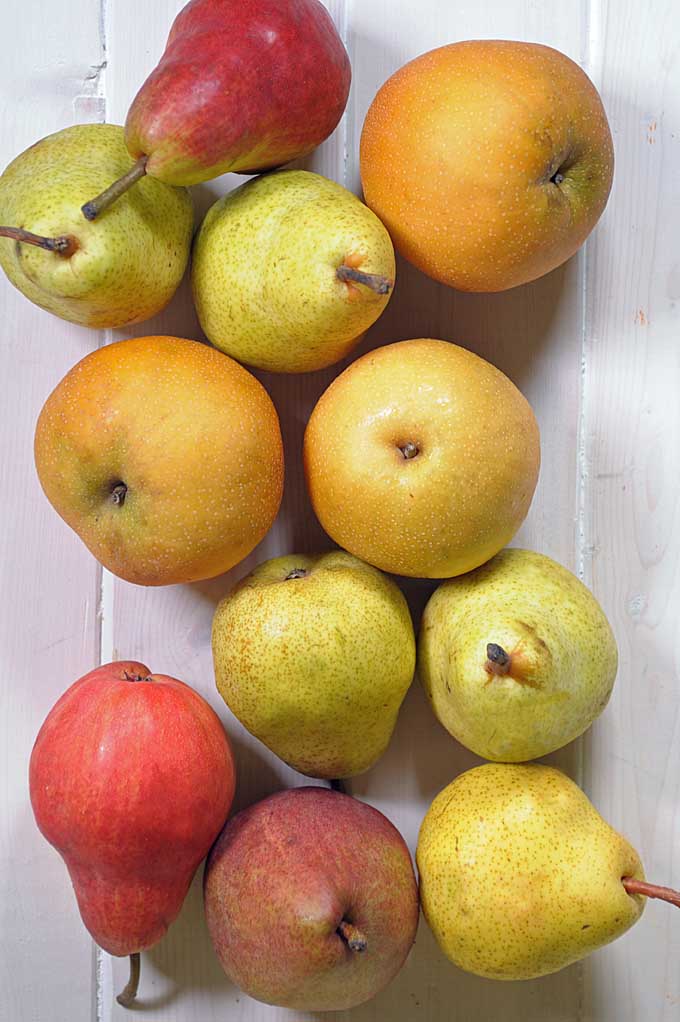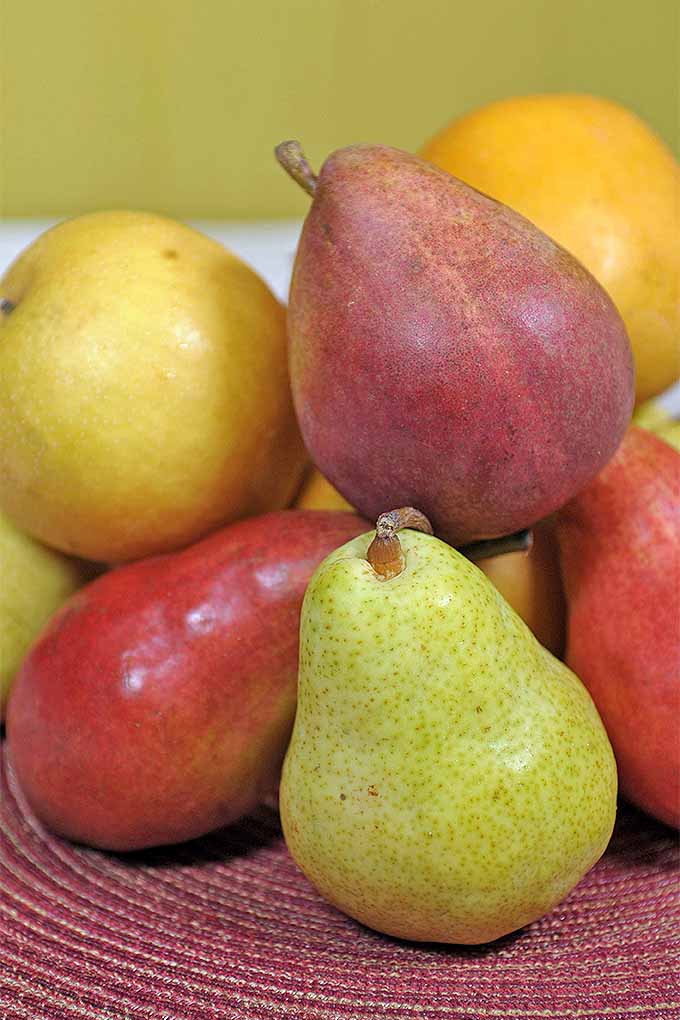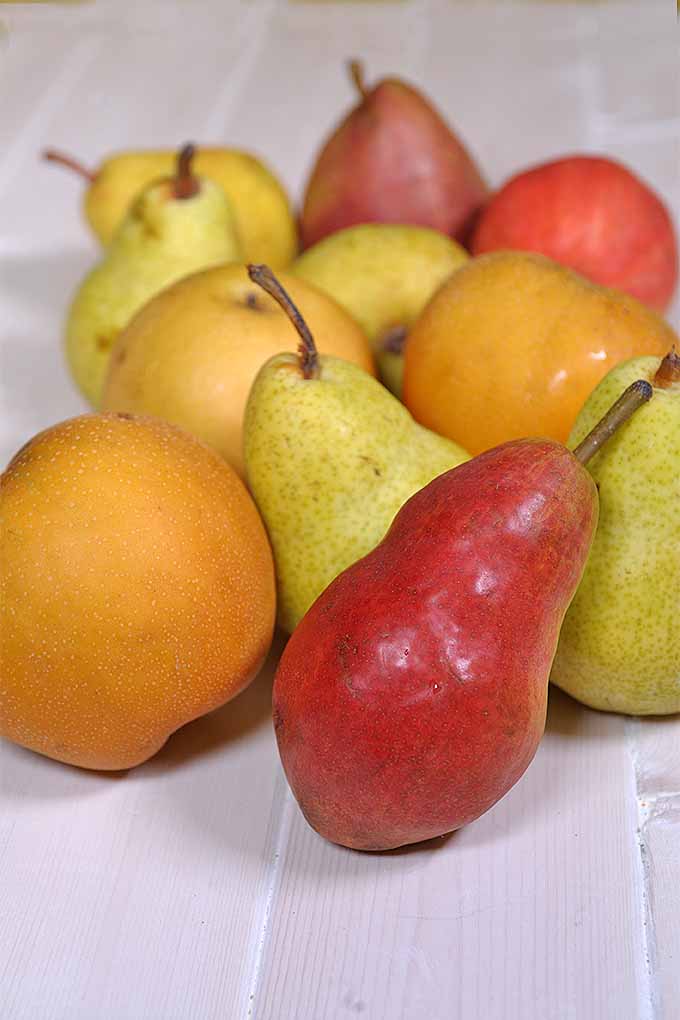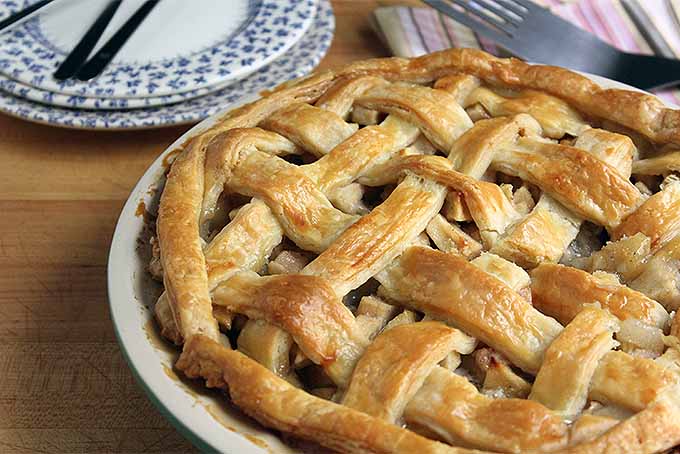With all the exotic fruits available today, pears have their work cut out for them, when it comes to capturing the attention of discerning shoppers.

It’s high time we pay these oft-forgotten fruits some attention, and learn how to ripen, store, and prepare them to perfection.
A Healthy Fruit with an Aristocratic Heritage
In terms of cultivation, pears are an interesting fruit. Unlike apples that may be picked and eaten immediately, most pears mature, but do not ripen on the tree.
What?
That’s right. They don’t get ripe swinging from a branch in the sunshine. According to the Oregon State University Extension Service, before they can ripen, they must go through a period of cooling that lasts from one day to six weeks, depending upon the variety.
This is generally done before the fruit makes its appearance in the produce aisle. It’s this “post-harvest chilling” that sparks the production of ethylene, the ripening hormone.

Luckily for us, at least a few varieties of this delicious fruit are available in grocery stores year round. The USDA’s Foods Fact Sheet states that one medium pear with the skin on contains 22% of the daily recommended value of fiber, and 15% of the suggested amount of calcium for a 2,000-calorie diet.
It is believed that some form of this healthy fruit grew wild in the forests of the Middle Ages. However, today’s popular varieties most likely date to nineteenth century France, and aristocratic landowners who cultivated them in competition with their neighbors.

The American-International Encyclopedic Cookbook
And, according to my 45-year-old American International Encyclopedic Cookbook by Anne London, still available on Amazon, we can thank them for today’s commercially grown d’Anjou (Anjou), Du Comice (Comice), Bosc, and Winter Nelis.
According to the experts at Washington State University, there are over 3,000 varieties grown around the world. Only 10 are grown commercially in the US Pacific Northwest, and these account for 84% of total US production.
There are two categories of European-style varieties: summer and winter.
Summer cultivars grown in the US are Bartlett, aka. Williams; Red Bartlett; Starkrimson; and Tosca. Tosca is not generally available outside western regions of the US.
Winter fruits include Bosc, Comice, Concorde, Forelle, Green Anjou, Red Anjou, and Seckel.
The most common types in US grocery stores across the nation are Green Anjou, Bartlett, and Bosc.

Comice generally make an appearance around the holidays, under a variety of brands. You’ll see giant, heirloom varieties featured prominently in gourmet gift baskets.
Seckel, said to originate in Philadelphia in the 1700s, make an appearance in farmers markets in my region in the fall. This bite-sized variety is prized for its exquisitely sweet flavor and spicy undertones.
Warren is another autumn treat I occasionally stumble upon in gourmet shops here in the Northeast. Considered by many to be the world’s most delicious variety, its origins are somewhat unclear. It seems to be American, and an exquisite combination of Seckel and Comice.
And finally, there’s a completely different type: the Asian pear.

Nine Asian varieties are currently grown in the Pacific Northwest.
Also members of the Pyrus genus, P. pyrifolia are usually sold under the generic name “Asian pear” or “apple pear,” and consumers seldom know which variety they are buying. These sweet fruits are unique in that they are crisp and round, like apples.
Unlike their traditional bell-shaped cousins, Asian types do not require ripening at home. Instead, they ripen on the tree, and generally arrive at grocery stores ready to eat.
Choosing, Ripening, and Storing
When choosing your pears to bring home, look for pieces that have no bruises or torn skin. Natural blemishes and variations in skin color have no effect on flavor.
Grasp the fruit in your hand, and gently press your thumb against the upper neck. If it yields, it’s ripe; if it doesn’t, it will need time to ripen at home.
The average ripening time for pears is about a week. Bartletts usually take 4 to 5 days, and d’Anjou require 7 to 10.

Simply leave the pieces of fruit side by side on a plate on the kitchen counter, until the necks yield to gentle pressure. Do not stack them, to avoid bruising and spoilage. Wait to wash the fruit until you are ready to eat or cook with it.
You may speed up the process by placing fruit in a paper bag to trap ethylene, the ripening hormone. Some folks add a ripe apple or banana to the bag for a jolt of ethylene gas. Either way, check on your fruit daily, remove them from the bag when the necks yield to gentle pressure, and don’t let your apple or banana rot!
And, if your fruit ripens before it’s needed, store in the refrigerator for up to five days in an airtight container or food storage bag. Return them to room temperature before serving.
The exception to the ripening process, as we mentioned, is the Asian type. It’s generally ripe when it arrives at the store and because its firm flesh does not soften with ripeness, the pressure test is not useful. Instead, a sweet fragrance indicates that this type is ready to eat.
Another Option: Freezing
Pears may be used to prepare a variety of tasty dishes, so you’ll want to keep some on hand.
Consider canning like grandma did, or you may try freezing for a ready supply during inclement weather, when shopping trips may be few and far between.

Not the best fruit for freezing, most types are quite soft when ripe. However, if you decide to try it, firm varieties like commercially available d’Anjou, or homegrown varieties like Baldwin or Kieffer, are your best bet.
I follow the instructions in the American International Encyclopedic Cookbook, slightly adapted to use the ingredients that I typically have on hand.
Stainless Steel Delightly Corer
The Delightly company makes a sturdy stainless steel, dishwasher-safe pear and apple corer that’s available on Amazon, and it’s excellent for removing the seeds from a lot of fruit quickly, if you’re working in big batches.
Check out our recipe for Freezer-Preserved Pears in Syrup (coming soon!)
If you like them frozen, you might want to check out our article, “The Yonanas Fruit Soft-Serve Maker Fulfills Your Sweetest Dreams,” to learn what you need to prepare a smooth and satisfying frozen fruit treat.
Made Delicious Your Way
All ripe pears are juicy and delicious. However, the softest are best eaten out of hand, and firmer ones are more suitable for cooking.
Bartlett and Comice are best eaten raw. They are the softest varieties, and they tend to disintegrate and melt away when cooked.

Anjou and Bosc retain their shape and texture quite well when cooked.
And, if your recipe calls for a crisp, crunchy fruit, Asian varieties are a great choice.
You’ll find this type of fruit is a great addition to salads of all kinds, including Pear Salad with Fried Goat Cheese and Maple Vinaigrette, Baby Greens with Roquefort, or Bosc, Currant, and Hazelnut Salad.
And, I know your Sunday brunch guests will be delighted when you serve refreshing fruit-filled French Cosmopolitans, followed by a delectable Gingered Pear Coffee Cake with Streusel Topping.
The soft flesh and sweet juiciness of this special fruit is used to its best advantage in desserts like our harvest-time favorites: Maple Pear Crostini, Apple Pear Pie with Cardamom and Ginger, Ricotta Pear Stacks, and the epitome of gooey goodness, Pear Crisp.

If you have family members with dietary restrictions, like I do, you’re going to love this Vegan and Gluten-Free Nutty Pear Crumble, and Pear Custard Pie.
Get Reacquainted
My first bite of a pear always takes me back to a childhood picnic, and a soft yellow Bartlett dripping juice down my chin.
Ripened to perfection, it is a feast unto itself.
So, imagine my joy when it’s paired with two additional favorites, tangy Roquefort and a glass of Cabernet!

Add pears to the shopping list before you forget, and give them the attention they deserve. You’re going to love having another favorite in your culinary repertoire!
If you’re a fruit grower, and find yourself with a bumper crop, see our articles, “Harvest Jams and Jellies: 4 Simple Steps to Making Your Own Sweet Spreads,” and “Foodal’s Ultimate Guide to Dehydrating Your Garden’s Bounty,” for additional ways to use every sweet and juicy morsel.
How do you like your Bartletts or Boscs? Tell us in the comments section below.
Don’t forget to Pin It!

Pie photo by Kendall Vanderslice and all pear photos by Mike Quinn, © Ask the Experts, LLC. ALL RIGHTS RESERVED. See our TOS for more details. Product photos via Ty Crowell and Delightly.
About Nan Schiller
Nan Schiller is a writer from southeastern Pennsylvania. When she’s not in the garden, she’s in the kitchen preparing imaginative gluten- and dairy-free meals. With a background in business, writing, editing, and photography, Nan writes humorous and informative articles on gardening, food, parenting, and real estate topics. Having celiac disease has only served to inspire her to continue to explore creative ways to provide her family with nutritious locally-sourced food.



